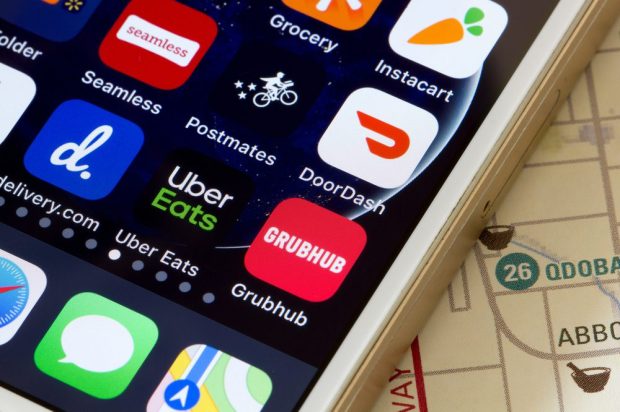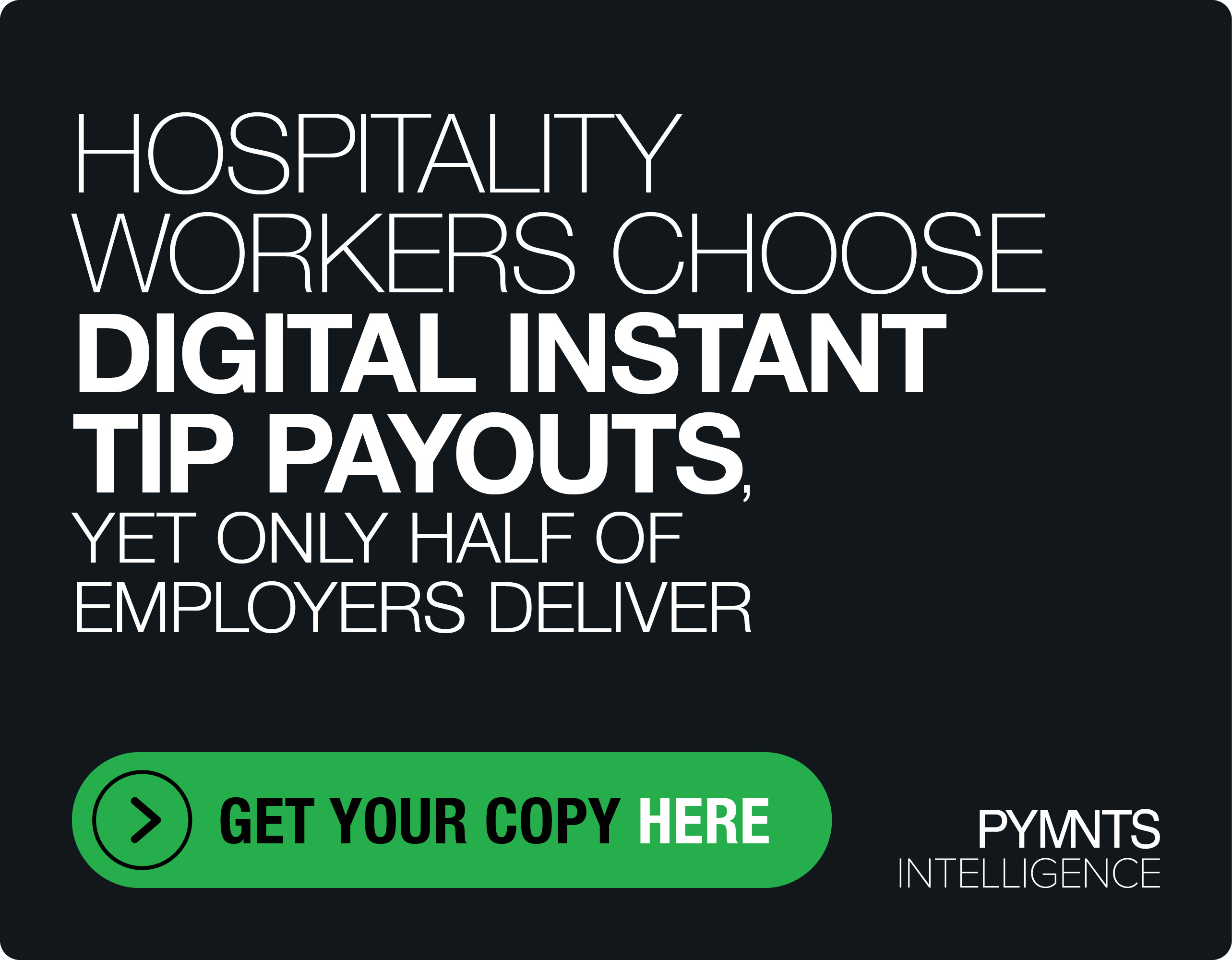58% of Restaurant Aggregator Customers Order From the Same Restaurants

Just as the restaurant industry rebuilt itself, economic uncertainty rose to rechallenge it. Amid inflation concerns and the ever-present threat of a recession, attracting and retaining customers is crucial to surviving the next downturn.
PYMNTS’ data found that despite consumers’ overall drop in use of food aggregators such as Uber Eats and DoorDash, restaurants may have a real opportunity to strengthen their financial positioning by targeting online diners who use aggregator platforms. These consumers are more likely to be young and affluent. Although many have increased their use of aggregators in the past year, our research uncovered quirks in their behavior that may give some restaurants a significant edge in food delivery.
This base of aggregator users has remained steadfast and engaged for multiple reasons, including the ability to try new restaurants and the convenience and control these platforms provide. Most, however, know exactly what they want to order before they log in to an aggregator, meaning that well-developed first-party apps could eliminate the middleman and serve as a foundational element of a winning strategy for restaurants.
These findings and insights are part of “Connected Dining: Third-Party Restaurant Aggregators Keep the Young and Affluent Engaged,” a PYMNTS-exclusive report based on a survey of 2,288 United States consumers conducted from March 9 to March 14. We collected information from customers regarding their use of third-party aggregator platforms to purchase meals, including their motivations for aggregator use, the characteristics of aggregators they find appealing, and why they are leaning on the platforms more or less than in previous years.
Free? Of course.
You've uncovered one of our premium articles. Register to keep reading and receive free unlimited access to all our premium content.
This is what we learned.
Aggregator use has fallen for consumers at large because of high prices and the desire to dine in person, but young and affluent consumers are engaging more with third-party platforms — for their own reasons.
Although third-party food aggregator platforms redefined the restaurant industry in recent years, several strikes against them have mounted in a world no longer defined by a pandemic. With inflation and economic instability on consumers’ minds, negatives such as the increased cost of food and a less personal experience than dining on-premises have overtaken the convenience gains and other advantages of aggregators for many consumers. Just 5% of consumers made their most recent food purchase through a third-party platform in the last six months. Even automated kiosks, which have never exhibited overwhelming popularity in PYMNTS’ data, were used by 8% of consumers for their most recent food purchases.
In the last six months, 40% of all survey respondents have used an aggregator at least once, meaning most U.S. consumers have not used a food aggregator in at least half a year.
It is not all doom and gloom for these third-party platforms. PYMNTS’ data found that 44% of aggregator users made more purchases via aggregators this year than last year. Additionally, particularly high shares of Generation Z consumers (69%) and those annually earning more than $100,000 (48%) continue to use food aggregators. A small user base is much more palatable if it is young and affluent.
Restaurant owners have a reason to pay attention to this development. As nearly three times as many consumers made their most recent food purchase through a first-party app than a third-party aggregator, at 13% and 5%, respectively, the details of why the most affluent and youngest consumers have kept engaged with aggregators and even increased their use could inform better first-party app design.
Even though 77% of aggregator users think the platforms are more expensive than first-party apps, these consumers value the convenience and time saved using these platforms enough to spend extra.
As affluent and younger consumers largely comprise the aggregator user base, there may be little surprise that convenience and time savings are their top reasons for continually using third-party platforms. The convenience factor is easy to understand from the point of view of both the affluent and Gen Z shoppers; the former often lead busy lifestyles and hence crave apps that make it easier to manage meals for themselves and their families, while the latter are naturally more inclined to expect and use innovative digital apps for shopping that inherently provide efficiencies.
Roughly four in five aggregator users acknowledged that third-party apps are more expensive than restaurant apps. Interestingly, a nearly equal share of these consumers, 77%, ultimately increased their use of aggregators in the last year, meaning that paying more for their food did not particularly bother them. Not all consumers were as accepting of that reality, as 82% of aggregator users who reduced their use in the last year noted the higher expense incurred by using the platforms.
Key attitudinal differences between consumers using aggregators more and those who are pulling back highlight some of the draws and drawbacks of these options.
Aggregator lovers, or at least those using the platforms more frequently than last year, were particularly likely to agree that they use these platforms when they lack time to prepare food, at 80%, that they try new restaurants via these platforms, at 74%, and that aggregators give them more control of the specifics of their meals, at 80%. In comparison, for consumers who decreased use of aggregators, 70% agreed they use these platforms when short on time, 47% said the platforms allow them to try new restaurants and 65% agreed that aggregators allow them more control over their meals. These consumers were particularly likely to note that food quality can be compromised, at 79%, suggesting that bad experiences may have led them to use alternative channels.
Focusing on the factors that make or break consumer relationships could help aggregators or restaurants build brand loyalty and engage their customer base.
Because nearly 60% of aggregator users already know which restaurant they will buy from before logging in, restaurants may have a meaningful opportunity to build first-party apps and take back market share from aggregators.
The buying habits of engaged aggregator users revealed what may be a startling truth: 58% have made their restaurant choice before logging in to a platform most or all of the time. In other words, the aggregator value-adds of discovery and choice do not impact most engaged consumers all the time or often. This means restaurants could build their own first-party apps to directly engage these aggregator users, potentially offering lower prices and developing marketing strategies to strengthen customer or brand loyalty.
A further indicator that strengthens the case for first-party apps to engage directly with customers is that just 10% of aggregator platform users browse through an aggregator’s site, meaning apps can direct users to special deals, offers and new menu items as soon as they log on. Retaining order histories and providing incentives to reorder the same items might also help restaurants improve their menu planning and inventory purchasing. Restaurants can gather and store this information more readily via a first-party app.
This tendency does not cancel out aggregators’ value, especially among younger consumers. Among heavy aggregator users, Gen Z consumers are more likely to browse an aggregator platform, probably because, as a group, they are more price-conscious than affluent users. It also follows that they are often more tech-savvy than most other consumers, so they most likely browse third-party sites for money-saving deals.
Other findings in our data are a little less revelatory if still worthwhile to consider. Food delivery times and price influence undecided consumers the most when picking their restaurant, while food quality inspires customer loyalty. Although it may sound obvious, quality is the deciding factor for aggregator users when browsing options on a third-party app, with discounts also an important factor, if not the most important.
Conclusion
How repeat users of third-party aggregator platforms behave may prove insightful for restaurants contemplating developing first-party apps to attract and retain customers. The fact that these consumers choose the restaurant they plan to order from before accessing the aggregator platform means that restaurants can cut back on the process and engage directly with consumers via first-party apps. Such a move would primarily target the most committed users of aggregator platforms — Gen Z consumers and those with annual incomes of more than $100,000 — two groups that have increased their aggregator usage even as overall use has declined.
Methodology
“Connected Dining: Third-Party Restaurant Aggregators Keep the Young and Affluent Engaged,” a PYMNTS-exclusive report, is based on a survey of 2,288 U.S. consumers conducted from March 9 to March 14. We collected information from customers regarding their use of third-party aggregator platforms to purchase meals, including their motivations for aggregator use, the characteristics of aggregators they find appealing, and why they are leaning on the platforms more or less than in previous years.
“Connected Dining: Third-Party Restaurant Aggregators Keep the Young and Affluent Engaged,” is the most recent installment of PYMNTS’ Connected Dining series. For more, read the previous edition, “Connected Dining: Consumers Like the Taste of Discount Meals.”
